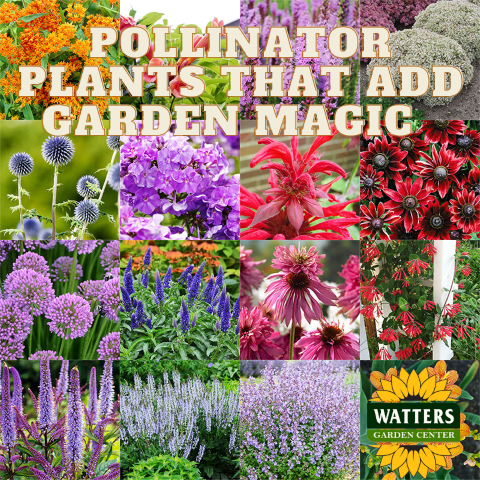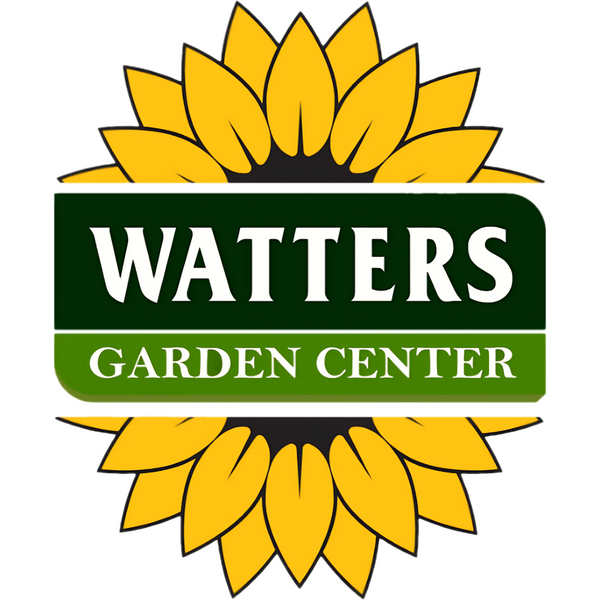
6 Sensational Pollinator Plants that add Garden Magic
Ken Lain, the mountain gardener
The garden is buzzing with life right now. Look closely, and you'll see a flurry of activity around the flowers that are holding strong through the end of our monsoon season. Hummingbirds zip from blossom to blossom like tiny fighter jets, bees methodically work their way through patches of coneflowers, and butterflies drift lazily in the afternoon sun. This living tapestry is powered by pollinators, and a garden designed for them is a garden brimming with energy and beauty.
Pollinators are more than just pretty visitors; they are essential workers in our ecosystem. About one-third of our food crops rely on them. By planting for pollinators, you are not only creating a vibrant, beautiful landscape for yourself but also supporting local agriculture, backyard vegetable gardens, and the wildlands surrounding us.
Many gardeners think planting season is over, but late summer and early autumn are ideal times to add perennials to the garden here in the mountains. The soil is warm, encouraging rapid root growth, and the monsoon rains provide the moisture needed for plants to get established before winter. The plants you add now will have a significant head start next spring.
Here are some of the best pollinator-attracting plants that thrive in our Prescott gardens and are perfect for planting now.
Anise Hyssop (Agastache) This is my top recommendation for a pollinator magnet. Its tall spikes of lavender, purple, pink, or even orange flowers bloom from mid-summer until the first hard frost. The flowers are rich in nectar, making them irresistible to bees of all kinds, butterflies, and hummingbirds. Anise Hyssop is incredibly drought-tolerant once established and loves the full sun. The leaves have a wonderful licorice scent, which is an added bonus. Deer and rabbits tend to leave this one alone, which is a significant advantage in our area.
Autumn Sage (Salvia greggii) Do not let the name fool you; Autumn Sage begins blooming in spring and goes nonstop until a deep frost. Its tubular flowers, in shades of red, pink, purple, and white, are perfectly shaped for hummingbird beaks. This is the plant you want if you love watching hummingbirds up close. It's a small woody shrub that requires very little water once it's settled in. Plant it in a hot, sunny spot and watch the show. For even more blooms, give it a light shearing in early July.
Gaillardia (Gaillardia grandiflora) Also known as Blanket Flower, this native plant is as tough as they come. Its cheerful, daisy-like flowers in shades of red, orange, and yellow are a beacon for bees and butterflies. Gaillardia thrives on neglect, preferring poor soil and full, blazing sun. It blooms continuously with no deadheading required. For local gardeners, this plant is a symbol of mountain resilience and a reliable source of color and activity.
Black-Eyed Susan (Rudbeckia) The classic golden-yellow petals surrounding a dark brown cone are an iconic image of late summer. Rudbeckia provides a large, sturdy landing pad for butterflies like Monarchs and Swallowtails. It's also a favorite of honeybees and native bees. After the petals fade, leave the seed heads on the stalks. Finches, especially Lesser Goldfinches, will flock to your garden in autumn to feast on the seeds. It's a plant that gives back to wildlife through multiple seasons.
Butterfly Bush (Buddleia davidii) The name says it all. The long, honey-scented flower panicles are covered in butterflies from summer through fall. Modern varieties are non-invasive and come in a range of sizes, from compact 3-foot shrubs perfect for containers to larger 8-foot specimens that create a stunning focal point. Look for varieties like 'Pugster' or 'Miss Molly' for well-behaved color that attracts every butterfly in the neighborhood. They need at least 6-8 hours of sun to produce the most flowers.

Creating a True Pollinator Haven Beyond just planting flowers, you can make your garden even more welcoming.
· Provide Water: A shallow birdbath with some pebbles or rocks for insects to land on provides a vital water source. Butterflies often engage in "puddling," drawing minerals from damp soil or sand.
· Skip the Chemicals: Pesticides don't discriminate. They kill beneficial insects right along with the pests. Opt for organic solutions like Sinosad Insecticidal Soap or Triple Action RTU neem oil, and only spray late in the evening when pollinators are not active.
· Plant in Drifts: Instead of planting one of this and one of that, plant in groups of 3, 5, or 7 of the same variety. This creates a larger, more visible target for pollinators, making it more efficient for them to forage.
By choosing the right plants and creating a supportive habitat, your garden becomes more than just a collection of flowers. It becomes a crucial stopover point, a restaurant and sanctuary for the tiny creatures that keep our mountain world blooming.
Every Saturday @ Watters Garden Center
Join us every Saturday morning at 9:30 AM for our free garden classes, right here at Watters Garden Center on Iron Springs Road in Prescott. August is packed with valuable insights to help your garden thrive!
August 23 @ 9:30 - From Newbie to Garden Pro in Arizona
August 30 @ 9:30 - Best Plants for Pollinators in Prescott
September 6 @ 9:30 - Fast Vines for Quick Garden Coverage
Come learn something new and connect with fellow gardeners!
Until next week, I'll be helping gardeners attract butterflies into their gardens here at Watters Garden Center.









